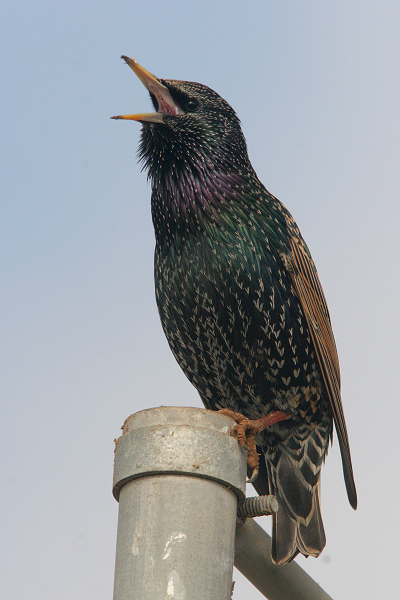
Location: Tijuana River Valley OSP, Imperial Beach, CA
Date: 2005-12-24
Lens: Canon 300mm IS F4 + 1.4x II Converter

 European Starling
Sturnus vulgaris
European Starling
Sturnus vulgaris
 Description
DescriptionAll of the approximately 200 million European Starlings found in North America are the result of an initial release of 100 birds from New York in the 1890's. The release was done by a society that decided it was going to introduce to America all of the birds mentioned in Shakespear's works. The bird had reached Florida by 1918, Canada and Maine by 1920, and the west coast by 1940. Migratory behavior and routes were shortly seen after its release. As its name implies, the bird's native home is across Europe. These birds are highly social and commonly found in large flocks. They do not, however, defend areas except for directly around the nest, which is usually in a cavity of some sort. They also return to the same nest site each year. This bird also feeds in the same place on a daily basis. Food consists of fruits, seeds, berries, and invertebrates. Another interesting fact is that they can mimic up to 20 songs from other species. Not quite as good as a mocking bird, but still impressive.
All shiny black with purple and green iridescence. White spots scattered throughout head and stocky body. Long, pointed, yellow bill - dark in fall. Short, square-tipped tail and pointed wings. Young are gray-brown with faint streaking below. Sexes similiar except for very minor differences. Female has a lighter eye ring, pinkish base to lower mandible (male has bluish), and undertail coverts are gray-brown (male has black). Orange legs. 7.5 to 8.5 inches in length.
Open country and grassy areas.
 Nesting
Nesting4-6 pale blue eggs with a 12-14 day incubation period. Fledging occurs 18-21 days after hatching. The nest is made from twigs, grass, and other debris, and is lined with softer plant material and feathers, usually built in a tree or building cavity.